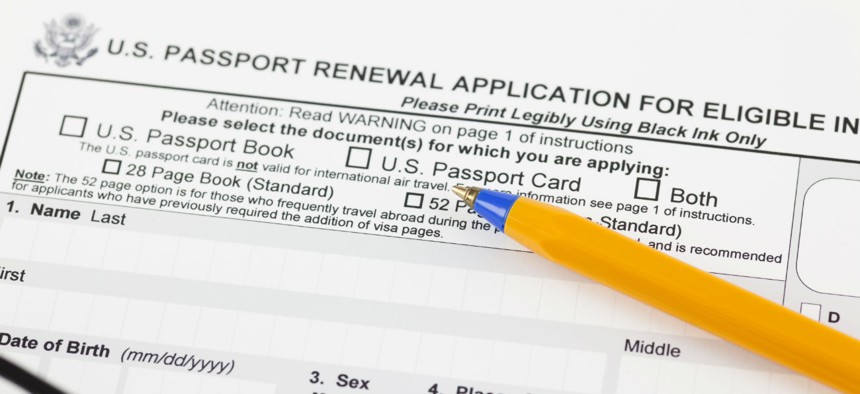
The passport application process was one area where government excelled in customer service. By Ekaterina_Minaeva / AP
What Popular Government Service Providers Could Teach Other Agencies
First of its kind report looks at successful practices that could be replicated governmentwide.
The federal government is not necessarily known for its customer service, but there are some bright spots that could offer lessons to other agencies, a new report found.
On Tuesday, the nonprofit Partnership for Public Service and Accenture Federal Services, a professional services company, released a first-of-its-kind report on customer experience with the federal government. The report is based on information published in September though the president’s management agenda and includes profiles on the government’s highest-volume service providers: the Transportation Security Administration, U.S. Citizenship and Immigration Services, Customs and Border Protection, the Education Department’s Office of Federal Student Aid, the Internal Revenue Service, Centers for Medicare and Medicaid Services, the Veterans Health Administration and the State Department’s Bureau of Consular Affairs.
“The perception of the federal government as a poor provider of customer service does not tell the whole story,” the report stated. “By pinpointing specific services and interactions that receive high ratings and digging deeper into what contributed to those ratings, the federal government can build on its strengths and spread successful practices across agencies.”
Examples of highly-rated services are: an approximately 90% satisfaction rate among the more than 77 million callers to the IRS’ account management line, and an average 87 out of 100 score for the process of applying for passports.
“One reason behind the success of some federal services is that the organizations providing them have done more than simply hire or train courteous and professional employees,” the report said. “They also provide employees with insights about what matters most to customers and suggest specific actions that can improve the experience for their customers.” Veterans Affairs Department leaders provide training for employees so they know how to handle veterans’ frustrations, for example.
The report also said the eight agencies reviewed have a presence on social media, which they use to engage and communicate with the public. Social media “may yield different insights than surveys and other customer research,” the report noted. The agencies “use their social media accounts to interact with customers, deliver information and updates, and sometimes answer questions or concerns.” For example, Medicare posts on Facebook and Twitter about Medicare access while abroad, and Federal Student Aid answers questions about repaying student loans on its various platforms.
“While many agencies were taking important actions, they could do more,” the report stated. Some lingering issues with customer service identified in the report were: lack of publicly available data, inconsistent quality of websites, limited access to services online and lack of transparency into government processes.
As part of the study, the Partnership and Accenture worked with the Center for Plain Language, a nonprofit that champions clear language for organizations’ success, to review 23 agencies’ websites. The average grade was a “C” because while some websites had a good flow of information, others were confusing to navigate.
Besides layout, many high-volume “tasks and transactions” are not offered online, such as applying for passports and green cards. “When customers must interact with the government in ways that seem archaic or out of sync with their expectations—which are set by their everyday experience with commercial services—it reduces their confidence in government overall,” the report said.
The Partnership and Accenture also found many federal customers feel like they’re dealing with a “black box” due to the lack of communication on some services. This ranged from questions over immigration status cases to confusion about the airport screening process. “Agencies that provide quick, straightforward information, clarify processes and address customer questions have seen positive results,” the report said.
Using 13 indicators across three categories (commitment to customer experience, customer service basics and customer feedback) to study the agencies, the Partnership and Accenture made several recommendations. This included: use social media and data collection to better understand customers, designate a senior executive to lead customer experience, ensure online information is understandable, improve online service delivery and transform organizational culture to focus more on customers. While this study looked at eight customer experience profiles, the report said the insights are applicable governmentwide.
“As the needs of government’s customers continue to change, and the private sector further raises the bar on what constitutes a good customer experience, government should constantly adapt in order to keep pace,” the Partnership and Accenture concluded.







